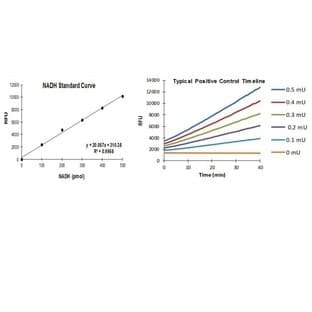
Supplier:
Alomone Labs Limited.Cat no: LX-103
BUY AMPA Receptor 1 Membrane Lysate\n
Alomone Labs membrane lysates enable end users to check the expression of the endogenous protein as opposed to a tagged version. All of our membrane lysates are supplied in lyophilized powder format, which means that they can be shipped and remain stable at room temperature.
Xenopus oocyte membrane lysates can also be purchased as a kit together with their respective antibody along with the control antigen (please see #LK-103).
AMPA Receptor 1 membrane lysate (#LX-103) could be used as a positive control in western blot analysis for Anti-AMPA Receptor 1 (GluR1) (extracellular) antibody (#AGC-004).
Membrane lysates are supplied as follows: 1 vial: 0.1 ml lyophilized Xenopus oocyte membrane lysates expressing rat AMPA Receptor 1. 1 vial: 0.1 ml lyophilized non-injected Xenopus oocyte membrane lysates.
AMPA receptors are members of the glutamate receptor family of ion channels that also include the NMDA and Kainate receptors. The three subfamilies are named after the original synthetic agonists that were identified as selective ligands of each family.The (A)-amino-3-hydroxy-5-methyl-4-isoazolepropionic acid (AMPA) receptor subfamily includes four members AMPA1-AMPA4 that are also known as GluR1-GluR4 respectively.The functional AMPA channel is believed to be a tetramer, with most neuronal AMPA receptors being heterotetramers composed of AMPA1 with AMPA2 or AMPA2 with AMPA3, although homotetramers can also be found.
AMPA receptors are permeable to Na+, K+ and Ca2+ cations. The Ca2+ permeability is dependent on the presence of AMPA2: presence of AMPA2 renders the channel impermeable to Ca2+. The Ca2+ permeability of the AMPA2 subunit is determined by the presence of an arginine (R) at a critical site in the pore loop instead of a glutamine (Q) present in the same site in the other AMPA subunits. RNA editing determines the presence of R as oppesed to Q. Since most AMPA2 subunits in the adult brain have undergone RNA editing and most AMPA receptors contain the AMPA2 subunit, most native AMPA receptors are impermeable to Ca2+. Gating of AMPA receptors by glutamate is extremely fast and therefore the AMPA receptors mediate most excitatory (depolarizing) currents in the brain during basal neuronal activity. The depolarization caused by the activation of post-synaptic AMPA receptors is necessary for the activation of NMDA receptors that will open only in the presence of both glutamate and a depolarized membrane.
Synaptic strength, defined as the level of post-synaptic depolarization, can be long term (hence the term long term potentiation, LTP) and therefore induce changes in signaling and protein synthesis in the activated neuron. These changes are associated with memory formation and learning. Changes in synaptic strength are thought to involve rapid movement of the AMPA receptors in and out of the synapses and a great deal of effort has focused in understanding the mechanisms that govern AMPA receptor trafficking.
Prices direct from Alomone Labs Limited.
Quick response times
Exclusive Absave savings/discounts
Latest promotions
Buy any polyclonal or monoclonal antibody from our extensive range of pre-made antibodies and for a limited time only receive a $50 discount!(T&C apply:...
New brilliant antibodies, and new lower prices!For flow cytometry reagents in general, \"bright is better.\" The violet-excitable BD Horizon™ BV421 and...
10% Discount on 2 Rabbit Polyclonal Antibody Service. With over 20 years experience, SDIX has developed into the premier US custom antibody producer,...
For the past decade scientists have extensively used ATS secondary toxin conjugates to make their own targeted toxins for in vitro use.The ability to combine...
We're so sure that you'll prefer Cayman Assay kits over your present brand that we're willing to give you a free assay kit to prove it!
Did your supplier increase the price of Fetal Bovine Serum? Did they substitute the US Origin with USDA? Well say no more! Innovative Research is still...
Bulk Cytokines with Custom Vialing.20 - 50% off cytokines, growth factors, chemokines and more...For a limited time Cell Sciences is offering substantial...
Are you planning to have a customised antibody made for your research?Since 2000, Everest has been producing a catalog containing thousands of affinity...
Top suppliers
Agrisera AB
11 products
Biotrend
Biosensis
969 products
ABBIOTEC
3011 products
SDIX
1 products
Spring Bioscience
2291 products
Cell Signaling Technology
4976 products
Rockland Immunochemicals, Inc.
7592 products
Boster Immunoleader
1533 products
OriGene Technologies Inc.
5281 products
Maine Biotechnology Services
227 products
BD (Becton, Dickinson and Company)
1 products
ABNOVA CORPORATION
Randox Life Sciences
1502 products
















